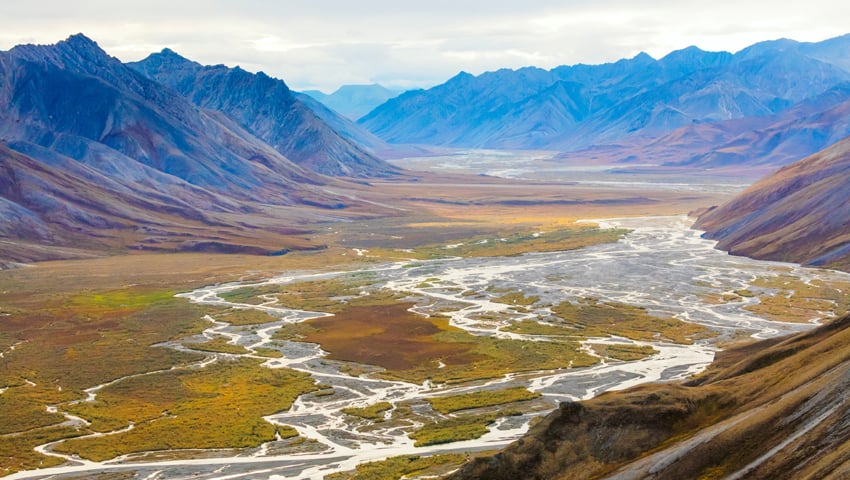After storing carbon dioxide in frozen soil for millennia, the Arctic tundra is being transformed by frequent wildfires into an overall source of carbon to the atmosphere, which is already absorbing record levels of heat-trapping fossil fuel pollution.
The transition of the Arctic from a carbon sink to a carbon source is one of the dramatic changes in the Arctic that are documented in NOAA’s 2024 Arctic Report Card. Climatic shifts are forcing plants, wildlife and the people that depend on them to rapidly adapt to a warmer, wetter and less certain world.
NOAA Administrator Rick Spinrad, said, “Our observations now show that the Arctic tundra, which is experiencing warming and increased wildfire, is now emitting more carbon than it stores, which will worsen climate change impacts. This is yet one more sign, predicted by scientists, of the consequences of inadequately reducing fossil fuel pollution.”
New research in the 2024 Arctic Report Card, contributed by 97 scientists from 11 countries, reveals record-setting observations that underlie ongoing changes emerging in the Arctic, which covers the lands and seas of the north polar region. They include:
- Continuing high air temperatures and wildfires
- Declines of large inland caribou herds
- Increasing precipitation, including rain-on-snow events that coat the landscape in an icy shell, making travel difficult for people and foraging challenging for wildlife
Observations also reveal stark regional differences that make local and regional environmental shifts highly unpredictable for people, plants and animals.
Twila Moon, lead editor of the Arctic Report Card and deputy lead scientist at the National Snow and Ice Data Center, said, “This year’s report demonstrates the urgent need for adaptation as climate conditions quickly change. Indigenous Knowledge and community-led research programs can inform successful responses to rapid Arctic changes.”
Notable findings from the 2024 Arctic Report Card
In the air
- Arctic annual surface air temperatures ranked second-warmest since 1900
- An early August 2024 heatwave set all-time record daily temperatures in several northern Alaska and Canada communities
- The last nine years are the nine warmest on record in the Arctic
- Summer 2024 across the Arctic was the wettest on record
In the ocean
- In September 2024, the extent of Arctic sea ice, which has a profound influence on the polar environment, was the sixth-lowest in the 45-year satellite record
- All 18 of the lowest September minimum ice extents have occurred in the last 18 years
- Arctic Ocean regions that were ice-free in August have been warming at a rate of 0.5 degrees F (0.3 degrees C) per decade since 1982
On land
- When including the impact of increased wildfire activity, the Arctic tundra region has shifted from storing carbon in the soil to becoming a carbon source to the atmosphere
- Circumpolar wildfire emissions have averaged 207 million tons of carbon per year since 2003
- The Arctic remains a consistent methane source
- Arctic migratory tundra caribou populations have declined by 65% over the last 2-3 decades
- Greenland Ice Sheet mass loss was the lowest since 2013
- Tundra greenness, a measure of expanding shrub cover due to warming temperatures, ranked second highest in the 25-year satellite record
Gerald Frost, senior scientist with Alaska Biological Research, Inc. and veteran Arctic Report Card author, said, “Many of the Arctic’s vital signs that we track are either setting or flirting with record-high or record-low values nearly every year. This is an indication that recent extreme years are the result of long-term, persistent changes, and not the result of variability in the climate system.”
